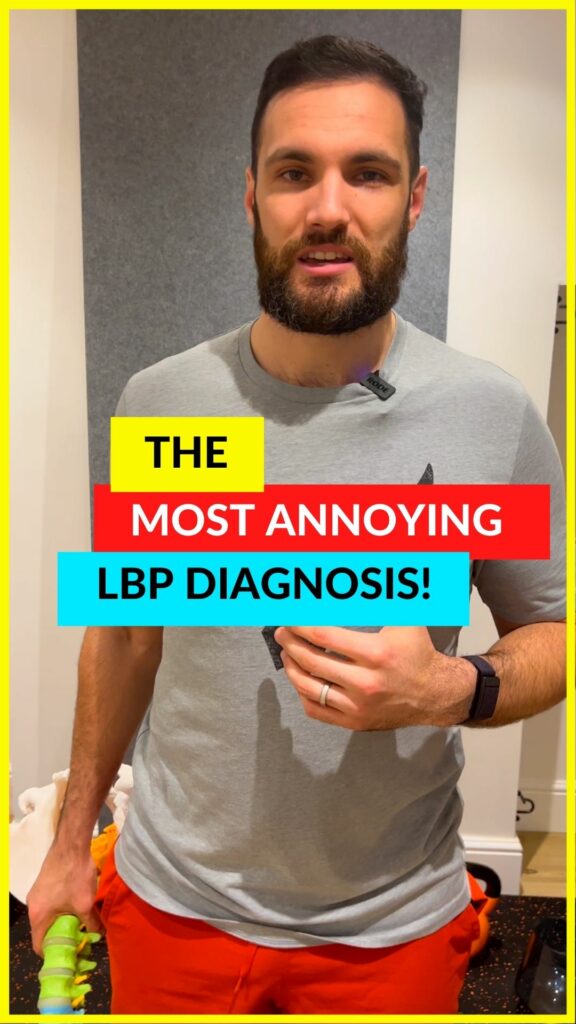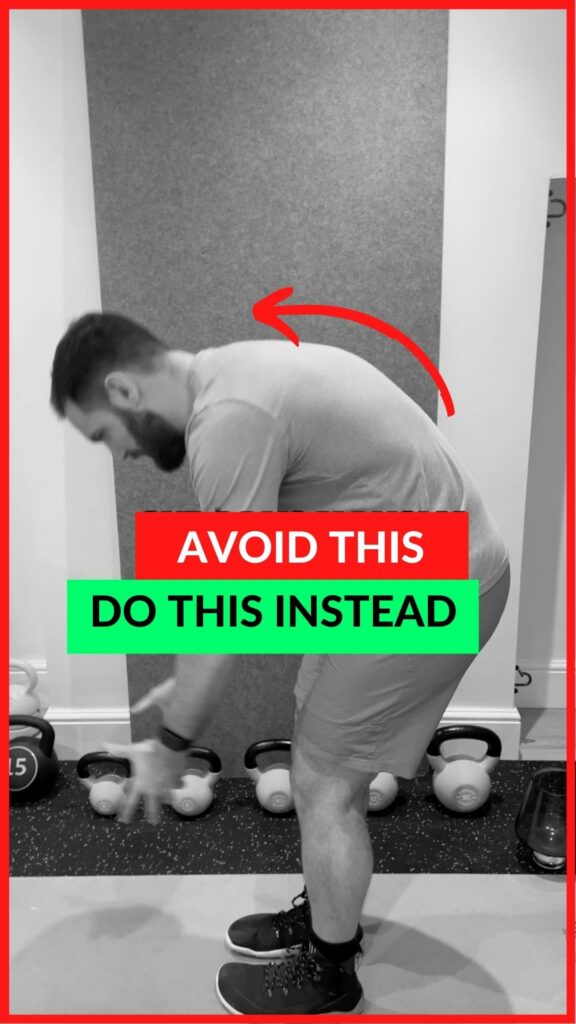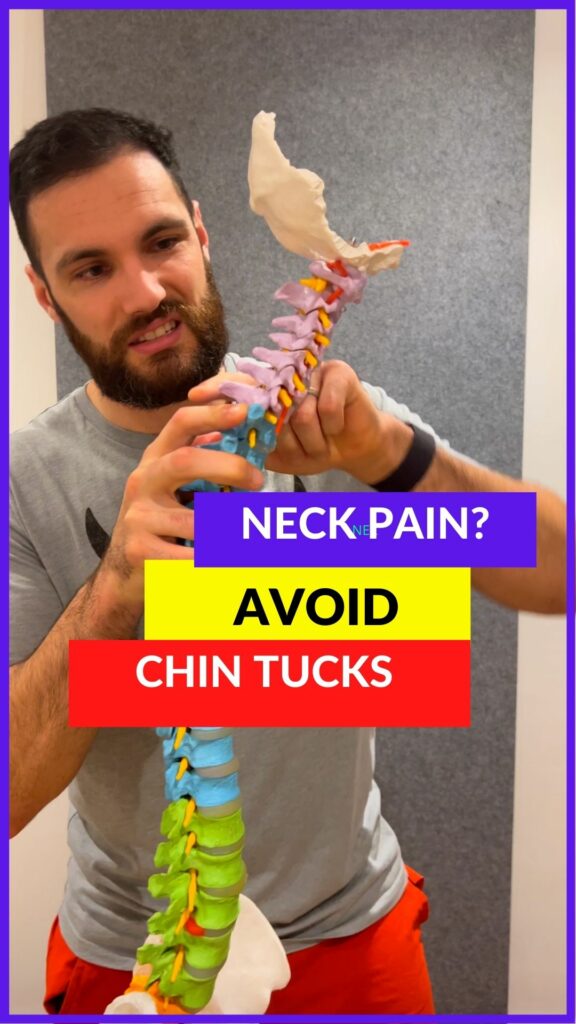
How To Fix Back Pain For Good With These 3 Pillars
Back pain for many is a very brief encounter that can happen to literally anyone, much like a sprained ankle or wrist, it’s down to simple bad luck. However, for many of us, due to the ways in which we use our bodies on a daily basis, and perhaps the ways we have abused our bodies over the years some of these “unlucky” events can result in something that becomes recurrent and long lasting, beyond a few days.
This brings up the question, what is the difference between the person that gets a one off episode of back pain, like the sprained wrist or ankle, and the person that has a recurrent issue that becomes a daily feature of life? The simple fact of the matter comes down to the organism to which this unlucky event occurs.
If the organism is a healthy one, that lives life and takes care of all the necessary components of our body, the injury will be just that, a one off injury. Unfortunately, nowadays, most people do not lead lives in this manner, for a multitude of reasons, many of which quite understandable. Health however, including back health, is one of those things that we often completely ignore until we do not have it. Thankfully however, it does seem as though people are becoming more and more interested in maintaining good health as a priority, rather than a reaction to disease, although this practice still is not nearly widespread enough.
In the UK anyway, we need only look at the demand on our NHS to see that it is self-evident that the population does not take their health and wellbeing seriously, until problems arise. Granted not all of us. But for most, it takes an event to lead to education, which leads to habit changes.
So how does this all play into getting your back fixed, and fixed for good? Well, today we thought it prudent to propose 3 “pillars” that will ensure that your back recovers, for the long term, but not just your back, your whole body. Because let’s face it, there is a limited understanding, only in the last week a member had been advised post low back injection, by their surgeon to “just walk as much as you can” as the core of their expert rehab. If this lazy approach is being espoused by people (experts) within the healthcare system, is it any wonder that the lay person is at a loss and makes mistakes when it comes to looking after their back. This complete inadequacy is why so many turn to places like YouTube to find some reasonable competence. At the same time, can healthcare practitioners really impart wisdom to sufficiently support a patient in a 10-15 minute appointment? The medical practitioners and patients would likely both agree that it is not sufficient!
These Three Pillars are there to help you right from the word go, right from the point at which your back becomes injured, your sciatica flares up or your disc becomes bulged, all the way through to the long term stewardship of a healthy body.
Pillar One – The boring one
We know it is not glamorous, and we know that a significant number of people that begin with the program skip this out at their own peril. There is a reason we go to great lengths to encourage members to join our weekly live Q&A, and to give us work in the Back In Shape Community with questions, because education, informing and explaining, helps ensure short, medium and long term results.
Often with back pain we see the same sorts of mistakes over and over, and 9 times out of 10 it is down to the old phrase,
You don’t know what you don’t know.
And if you don’t you’re most likely not to correct your erroneous beliefs and practices. This is why there are more educational videos and materials within the program and on the Youtube channel than exercises. We hear it often, just get to the demonstration, those that say this are those that can least afford to skip to the demonstration.
Education around the spine, how it works, how it fails and how we use our bodies on a daily basis helps us make changes and improvements immediately. On top of this, the education applies to 24 out of 24 hours of our day. From our sleeping, to our waking, our working, our downtime, and everything in between. You can see why in all Phases of the program we put the education units before the exercises. Without those modifications, we can do all the exercises we like, we’re going to have limited outcomes.
Severely limited outcomes.
Granted some of the education is for the short term, tweaks and adjustments, but much of it is for the long term, more on that later.
Pillar Two – the hard one
Yes, now is the time for exercises, the right ones, at the right time. But the education component does not stop here. You see, exercise is often all lumped into one group in the minds of many. That even means stretches are often referred to as exercises, mobilisations are often referred to as exercises, cardio is referred to as exercises. This lack of detail in the way in which we frame exercises is why so many get frustrated.
But I’ve been doing exercises for months/years/ages, why isn’t my back better?
The reality is that by exercises, we are specifically referring to strengthening exercises. Unfortunately what constitutes a strengthening exercise is as much how you do it as what you’re doing. For example, you might think that you’ve already been doing a squat, so you’re doing it right, but if you’ve been doing 10 squats daily for the last 2 months, you’re not doing it right, let alone if we looked at the technical execution of the squat.
This is one of the sticking points new members often have, there is an expectation sometimes that there are these secret exercises, because we’re all attracted to a secret thing we can do or take that will make everything work. The reality is that we need to be doing the right strengthening exercises, in the right way.
Firstly, this means that we are doing strengthening exercises, not walking, not jogging, not stretching, strengthening exercises. So this might be a squat, a dead bug, a bridge, a hip hinge etc.
But that’s not strengthening.
Strengthening comes from how we do these exercises, either with progressively more reps and/or progressively more resistance, through the use of bands and/or weights. But we have to be working at the right intensity too. For example, if we had to, how many reps could we do? Often we could do many more than just 10. So if we’re only doing 10, we’re not really strengthening are we?
This is one of the reasons we do have to structure the Back In Shape program to schedule in a degree of progression to “guide” people through this process safely until they hit a plateau, whereby they actually can only do 5 sets of 10, just about, and they couldn’t do an 11th or 12th rep well on that 5th set. Sometimes it takes time to get to this point and sometimes we have to add resistances to achieve this important point. But once we do, we have successfully arrived at the point at which we can start stimulating our body to strengthen.
I will say that again: “Once we arrive at this point, we can start stimulating the body to strengthen.”
Before this point you are not making significant strengthening improvements because you are working so submaximally, your body has no need to strengthen.
This might be disheartening, but it is the truth. A remedy however, is that many have very poor movement and coordination skills, so the ability to perform these movements is an issue. Much of that early benefit you might notice in the first instance, again for example in what we refer to as Phase 2, and to a lesser degree Phase 3, is neurological.
This is to say that the neurological control of balance and movement is being developed – not strengthening – but still important. To do strengthening when we have poor neurological control would be most unwise and likely make us worse through injury!
So Pillar Two is very much about learning the skill of movement to the degree we can then work at a sufficient level to start and progress with strengthening work, and make real, objective change.
Pillar Three: The unavoidable one
This final pillar is the difference between going in circles and having real success long term. It is also where many will fail and be thrust back into the throws of a relapse. Pillar Two will often have been worked on for many months, you’ve made strengthening improvement. Pillar One has been a success and you’ve re-evaluated and made real changes to the way in which you do things on a daily basis. You should have formed these as habits by now.
Pillar Three is keeping this up for the long term as we’ve heard, perhaps grown weary of, this is the new normal.
If you had discovered a new, better way of doing something, and it has got you results. Let us say you realized that your teeth would stop decaying if you received the wisdom to brush them daily, would you stop when your oral health improved? Of course not.
When it comes to our backs, unfortunately due to the negative emotional ties to the problem, we often lump the exercises in with this “negative” view of the whole thing. And so we view the exercises as a chore, this is a mistake.
A BIG MISTAKE.
By making the changes in Pillars One and Two, you have been granted the freedom to enjoy life again. You should tie these changes to the positive and realise that these are necessary ways of being, to live an optimal life.
Weakness is never a strength and sloppiness is never a virtue.
You have developed both as you have successfully gone through a program of rehabilitation. Going forwards, maintenance of the improvement is so much more pleasurable, and fits in with your life so much more readily than what’s required to get out of the “hole” of back pain.
Simply working out 3 to 5 times per week for 30 to 45 minutes with purpose and focus with resistance exercises that are progressive. Plus a few extra “flexibility and decompression practices” if our lives involve activities that are more undesirable from a back health point of view, such as being desk based at work. This is not a significant drain on your time each week. You have 168 hours every week and this amounts to a trivial amount of time. You still have plenty of time to resume your hobbies, other sporting pursuits as well as all the other activities you like and need to do.
If you do this right, continuing the great work you’ve done to make it this far, you will really be Back In Shape and have much greater resilience for the long term. You’re not “bullet proof” accidents can still happen, you can still be unlucky, but the capacity of your body to resist and recover from unfortunate strains will be so much greater than before.
Hopefully this week’s article has inspired you to make sure that you’re not only working on Pillar Two. You’re also working on Pillar One, educating yourself, asking questions, helping to learn more about how you can do things better on a daily basis, and where you cannot, have strategies to offset the bad with a little more good. Finally you can work on Pillar Three, for the long term. Continuing to be sensible, and consistent with your hard work.
Strengthening changes and an absence of laziness are things we do, and we must continue to do as habits. For if we do lapse, they will slip away. The further we go in the right direction, the more we can afford the occasional lapses in focus, but lapse regularly at your own peril. A fortnight’s holiday, or a week of illness, are valid, enjoyable for the former and unavoidable for the latter. But do not let the week to fortnight turn into months or years.
It’s simply having the discipline to put our body first, because if we do not, as many of you reading this may have experienced, your body will force you to do so sooner or later, often at a time that is least convenient.
Latest Tips In Less Than 60 Seconds!












The Three Pillars gets the 👍🏼, nice idea. However sorted we think we are, we can all benefit from a reminder occasionally when life takes over:) Thank you Michael and team
Thanks for the kind words Mary-Ann, it’s much appreciated, glad the concept made sense!